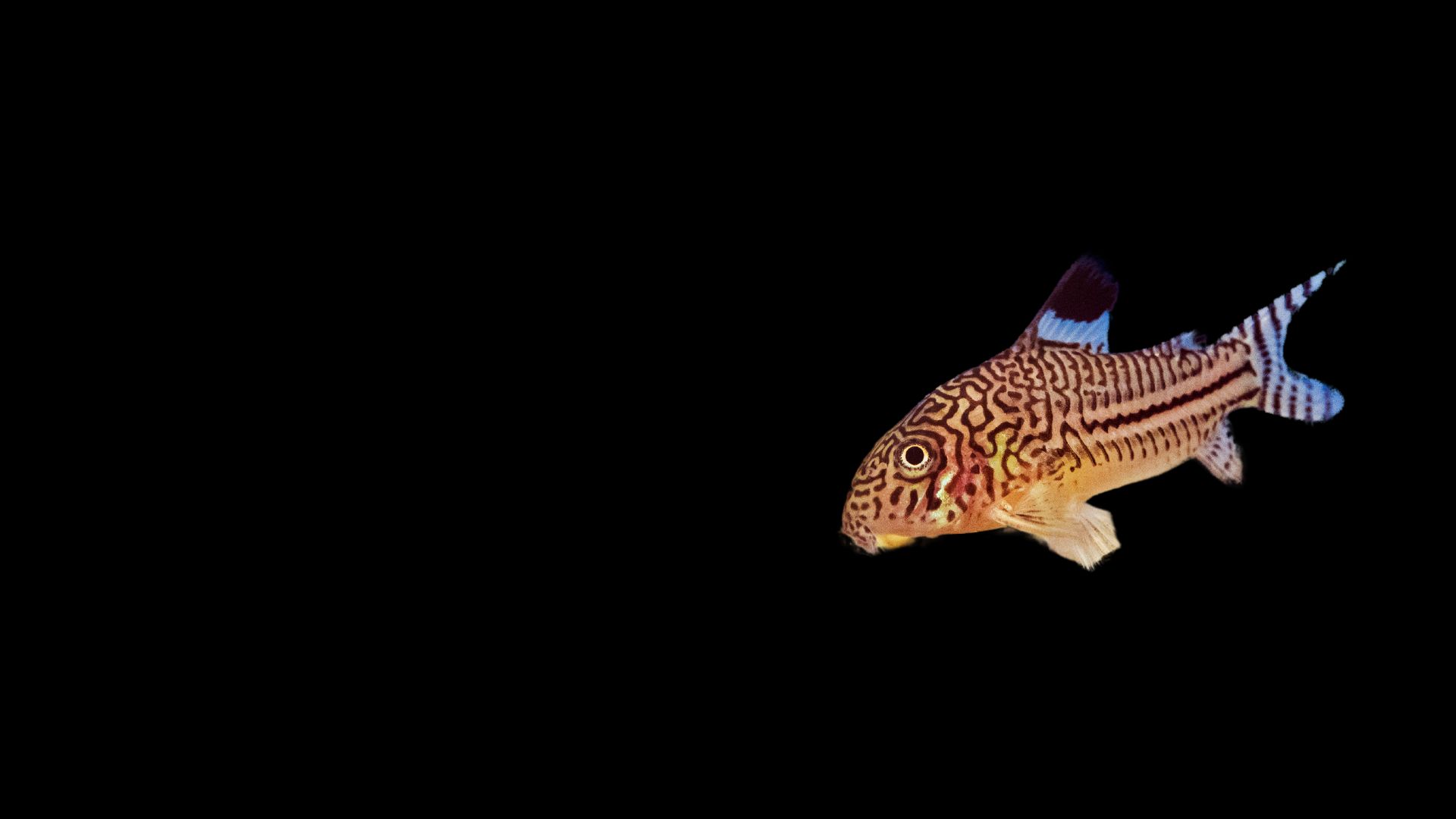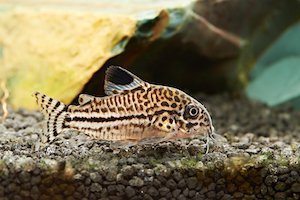
Corydoras Catfish
Scientific name: Corydoras aeneus
The Corydoras Catfish is a peaceful, bottom-dwelling freshwater fish native to South America, widely admired by aquarists for its small size, hardy nature, and gentle temperament.
It is well-suited for community aquariums, where it helps maintain a clean environment by scavenging uneaten food from the substrate. Corydoras are social fish that thrive in groups, displaying playful behavior and a distinctive “wiggling” swimming motion, making them a popular choice for hobbyists of all experience levels.
IUCN Red List of Threatened Species : Least Concern
Corydoras are social fish that thrive best in groups of at least six, as they are schooling species by nature. In larger groups, they exhibit more natural behaviors, such as synchronized swimming and playful interaction, which adds to their charm in community tanks.
While they are peaceful and non-territorial, providing them with hiding spots, such as caves or plants, ensures they feel secure. Corydoras are omnivorous, enjoying a diet of high-quality sinking pellets, live or frozen foods like bloodworms, and vegetables like blanched peas or zucchini. Their peaceful disposition, combined with their role as bottom dwellers, makes them ideal companions for a wide variety of fish, from tetras to dwarf cichlids.

Navite Location
South America, (Brazil, Argentina, Venezuela, Colombia, and Peru)
Varieties
Bronze / Panda / Peppered / Sterbai / Julii / and many more
Suggested Tank Mates
Neon Tetras / Guppies / Platies /Dwarf Gouramis / Mollies / Rasboras
Tank Mates to Avoid
Large Cichlids / Bettas / Arowanas / Crayfish
Diet
Sinking pellets or wafers / Live or frozen foods / Insect based foods
Breeding
Corydoras breed by laying eggs after triggered by cooler water.
Lifespan
5 to 10 years (depending on species)
Size
5 to 7.5 cm (2 to 3 in)
Minimum Tank Size
10 gallons (38 liters) for smaller species / 20-gallon (76-liter) recommended
Optimum Tank Temperature
22°C to 26°C (72°F to 78°F)
Ideal pH Level
6.0 to 8.0
Water Hardness
2 – 12 dGH
Common Health Issues
Barbel Erosion / Ich (White Spot) / Fin Rot / Internal Parasites / Fungal Infections
Interesting facts
They “Breathe” Air
Corydoras have a modified intestinal tract that allows them to gulp air from the surface, which helps them survive in low-oxygen environments. You’ll often see them dart to the surface for a quick gulp of air.
Highly Social Fish
Corydoras are schooling fish and thrive in groups. They are happiest when kept in groups of six or more, exhibiting more natural and playful behaviors when surrounded by others of their kind.
Armor-Plated Bodies
Unlike many other fish, Corydoras are covered in bony plates known as scutes, which provide extra protection from predators in the wild.
They Communicate with Sound
Corydoras can produce audible sounds by grinding their pectoral spines or using their swim bladder, often during stressful situations or to communicate with each other.
Long-Lived for Their Size
With proper care, Corydoras can live up to 10 years or even longer, which is quite impressive for a small freshwater fish.
Variety of Species
There are over 170 known species of Corydoras, each with unique patterns and colors, offering a lot of diversity for aquarists to choose from.
Corydoras Catfish FAQ’s
Do Corydoras need a special substrate?
Yes, Corydoras prefer soft substrates like sand or fine gravel to protect their sensitive barbels while they forage for food at the bottom of the tank.
How can you tell if a Corydoras is male or female?
Females are generally larger and rounder, especially when viewed from above, while males tend to be slimmer and slightly smaller.
How many Corydoras should be kept together?
Corydoras are schooling fish and should be kept in groups of at least six to ensure they feel comfortable and exhibit their natural behaviors.
